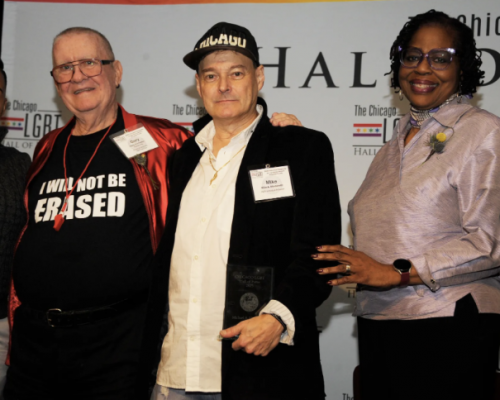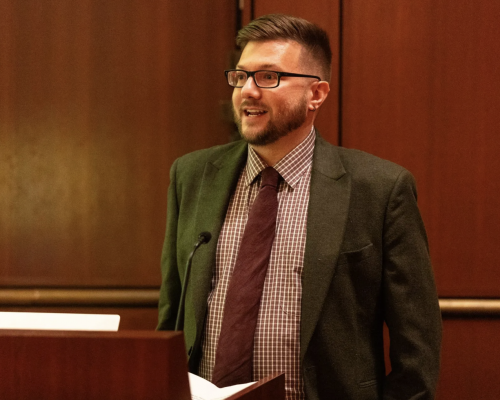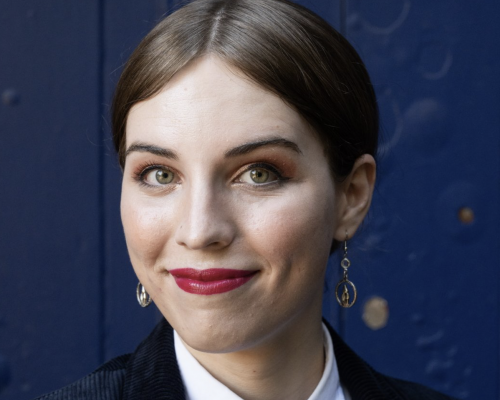by Chuck Colbert
The combined buying power of the U.S. LGBT adult population for 2015 is estimated at $917 billion. That’s according to a new analysis by Washington, D.C.-based Witeck Communications. By way of comparison, the community’s 2014 buying power was $884 billion.
 |
Bob Witeck of
Witeck Communications |
In releasing the finding, president and founder Bob Witeck said in a statement, “Buying power — also known as disposable personal income — is not the same as wealth. It is a practical tool for economists and marketers, in particular, to signal the increasingly visible contributions made to our economy by America’s diverse gay, lesbian, bisexual and/or transgender individuals and households.”
Disposable personal income (DPI), according to economists, is the amount of money that individuals have available to spend and save after paying taxes and pension contributions to the government (roughly 86 percent of income).
Witeck further explained, “To understand this estimate, it’s important to underscore that there is no evidence that same-sex households or LGBT people are more affluent or, on average, earn more than others. That is a stereotype, long debunked by economists and policy experts.”
Benchmark, inclusivity, and loyalty
“LGBT buying power is an economic marker that helps benchmark America’s diverse lesbian, gay, bisexual and transgender communities,” said Justin Nelson, National Gay & Lesbian Chamber of Commerce (NGLCC) co-founder and president, in a statement. “At NGLCC, we have more than 150 corporate partners that understand not only the value of the LGBT dollar, but the economics of inclusivity and loyalty. Their commitments to our communities prove our NGLCC philosophy that economic visibility, just like social visibility, is essential in building a diverse and inclusive society.”
 |
Justin Nelson of the
National Gay & Lesbian
Chamber of Commerce |
The National Gay & Lesbian Chamber of Commerce seeks to represent the business voice of the LGBT community.
Witeck agreed that LGBT workers, businesses and consumers are directly shaping the American economy. He said, “Today improved laws, greater visibility, and welcoming attitudes help address some of the longstanding discriminatory burdens that LGBT people and same-sex couples face. Nonetheless, LGBT Americans still confront many forms of legal, economic and social inequities in the absence of federal non-discrimination laws covering employment, housing, public accommodations, healthcare and other aspects of American society. The barriers confronting transgender people are especially severe and must be challenged.”
In addition, Witeck emphasized that contemporary market behaviors are favorably shaped by millennials who appear to be the most LGBT-inclusive generation yet. “I call this the PFLAG effect — which helps explain the familiar and loyal experiences of younger non-LGBT people towards their LGBT friends, family members and co-workers. Brands today recognize a growing proportion of younger consumers whose attitudes and buying behaviors are directly shaped by LGBT-friendly policies, campaigns and messages,” he said.
For example, in August 2014, according to a Google Consumer Survey, over 45 percent of all consumers under the age of 34 say they’re more likely to do repeat business with an LGBT-friendly company. A majority of these consumers — more than 54 percent —also say they would choose an equality-focused brand over a competitor. Keep in mind also that nearly three-fourth of millennials support marriage equality, according to Pew Research.
The methodology for Witeck’s analysis is based on an acceptable range of LGBT population estimates, aided by evaluating more than 100 online population samples conducted by the expert Harris Poll over more than a decade, the 2015 estimate reflects roughly six to seven percent of the adult U.S. population as willing to self-identify as lesbian, gay, bisexual and/or transgender (or 16 million-plus adults 18 years of age and older).
Witeck acknowledged that social science approaches tend to assume slightly lower population targets. Nonetheless, demographers also confirm that significant proportions of the LGBT population, particularly bisexual and transgender individuals, still remain resistant to traditional sampling and reporting methods. Fortunately, newer and credible surveys reveal that younger generations are beginning to self-report their sexual orientation and gender identity in higher numbers than earlier.
The general approach used for estimating buying power mirrors the steps applied by the Selig Center for Economic Growth at the University of Georgia in its calculation of the purchasing power of other diverse populations, such as Hispanics, Asian Americans and African Americans. This methodology uses aggregate disposable income data that are compiled by the Bureau of Economic Analysis of the U.S. Department of Commerce and are therefore considered the most authoritative measure of purchasing power in the United States. LGBT purchasing power is understood by estimating the proportion of total disposable personal income to the population range of LGBT-self identified adults.
Opportunity for LGBT media
All of which is to say, the buying power of LGBT people provides an opportunity for LGBT media.
“Buying power grows each year,” Witeck said in an interview last year, “because our population is growing and the economy is growing” and “therefore more people are reachable, and of course, more people, especially younger ones, are coming out. Gay media will find a growing cross-section of audiences who are more comfortable and confident.”
In addition, Witeck said, “I believe the gay marketplace and readership have transformed. It’s a millennial audience as well.”
Accordingly, he said, “Gay media can connect with younger people very well, who are so often beyond labels. They’re interested and have shown engagement in our lives, our community, and our events, [such as] gatherings, concerts, theatre performances, festivals, sporting events, and Pride events — all are shaping up to be truly inclusive and to engage diverse consumers and families. In other words, our lives, our events are welcoming and receptive to people of all backgrounds.”
In attracting a younger audience, Witeck said, “Gay media is a trusted channel to educate them and also show millennials new windows on entertainment and involvement.”
Better yet, with a growing economy, “The reach to the advertising base is changing,” Witeck said. For example, “In local markets there are many more venues and retailers who find it important to connect with gay readers because they are among the most avid, viral connectors. Gay people, I have seen, tend to index higher in promoting newer products and sharing experiences in all forms of social media. I think that alone makes it clear that marketers want to educate gay readers about what they are doing. They want to show that their shop, their restaurant, their bar, their club — whatever they are opening or doing — doesn’t have to be intended only for a gay following, but it has to be one that offers originality and style. And with the sunset of many gay bars, it will be important for other nightspots to identify ways to make themselves engaged, accepting, inviting to LGBT people, too.”
TOP STORY
Volume 18
Issue 5








